Zhuohuang Zhang
ConferencingSpeech 2022 Challenge: Non-intrusive Objective Speech Quality Assessment (NISQA) Challenge for Online Conferencing Applications
Apr 01, 2022
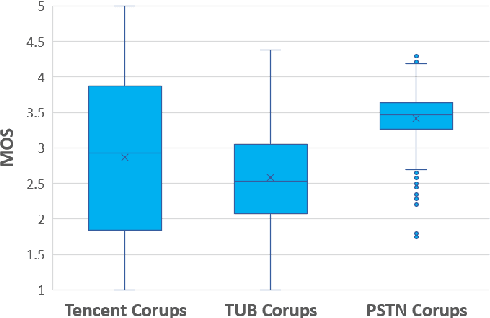
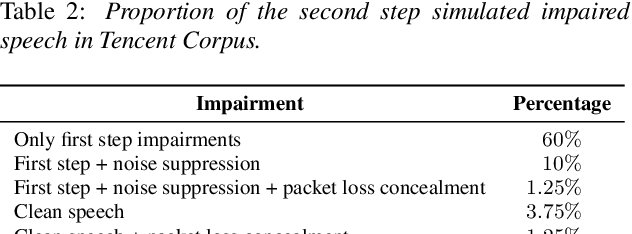
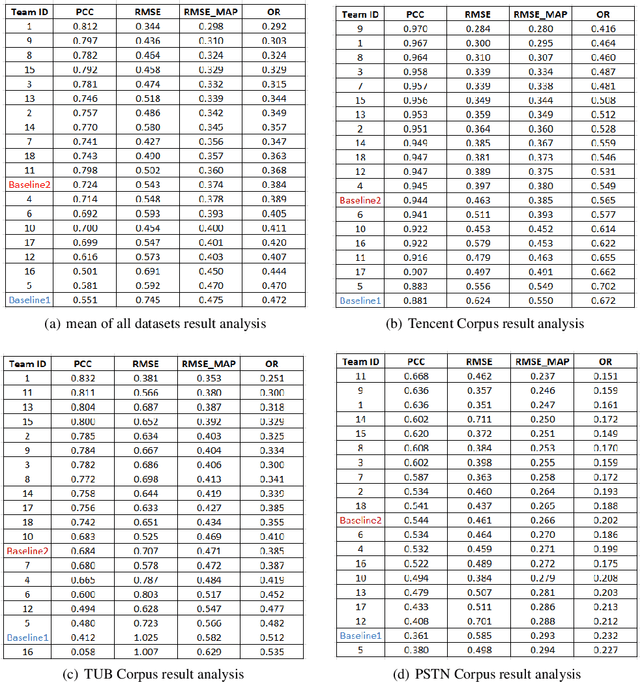
Abstract:With the advances in speech communication systems such as online conferencing applications, we can seamlessly work with people regardless of where they are. However, during online meetings, speech quality can be significantly affected by background noise, reverberation, packet loss, network jitter, etc. Because of its nature, speech quality is traditionally assessed in subjective tests in laboratories and lately also in crowdsourcing following the international standards from ITU-T Rec. P.800 series. However, those approaches are costly and cannot be applied to customer data. Therefore, an effective objective assessment approach is needed to evaluate or monitor the speech quality of the ongoing conversation. The ConferencingSpeech 2022 challenge targets the non-intrusive deep neural network models for the speech quality assessment task. We open-sourced a training corpus with more than 86K speech clips in different languages, with a wide range of synthesized and live degradations and their corresponding subjective quality scores through crowdsourcing. 18 teams submitted their models for evaluation in this challenge. The blind test sets included about 4300 clips from wide ranges of degradations. This paper describes the challenge, the datasets, and the evaluation methods and reports the final results.
All-neural beamformer for continuous speech separation
Oct 13, 2021



Abstract:Continuous speech separation (CSS) aims to separate overlapping voices from a continuous influx of conversational audio containing an unknown number of utterances spoken by an unknown number of speakers. A common application scenario is transcribing a meeting conversation recorded by a microphone array. Prior studies explored various deep learning models for time-frequency mask estimation, followed by a minimum variance distortionless response (MVDR) filter to improve the automatic speech recognition (ASR) accuracy. The performance of these methods is fundamentally upper-bounded by MVDR's spatial selectivity. Recently, the all deep learning MVDR (ADL-MVDR) model was proposed for neural beamforming and demonstrated superior performance in a target speech extraction task using pre-segmented input. In this paper, we further adapt ADL-MVDR to the CSS task with several enhancements to enable end-to-end neural beamforming. The proposed system achieves significant word error rate reduction over a baseline spectral masking system on the LibriCSS dataset. Moreover, the proposed neural beamformer is shown to be comparable to a state-of-the-art MVDR-based system in real meeting transcription tasks, including AMI, while showing potentials to further simplify the runtime implementation and reduce the system latency with frame-wise processing.
Generalized RNN beamformer for target speech separation
Jan 04, 2021

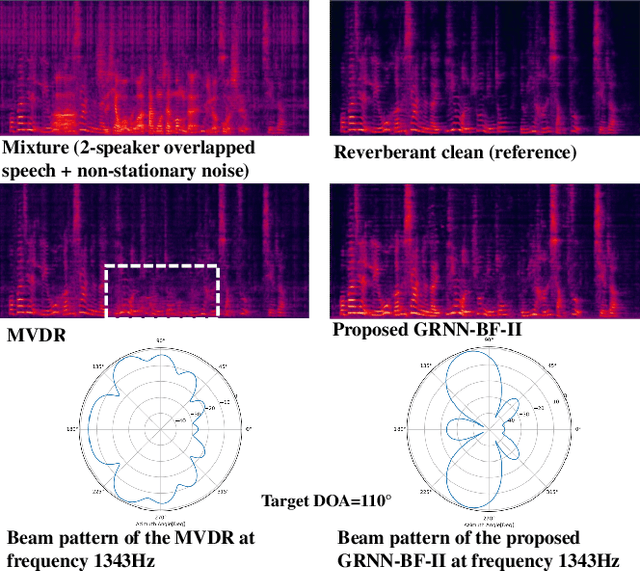
Abstract:Recently we proposed an all-deep-learning minimum variance distortionless response (ADL-MVDR) method where the unstable matrix inverse and principal component analysis (PCA) operations in the MVDR were replaced by recurrent neural networks (RNNs). However, it is not clear whether the success of the ADL-MVDR is owed to the calculated covariance matrices or following the MVDR formula. In this work, we demonstrate the importance of the calculated covariance matrices and propose three types of generalized RNN beamformers (GRNN-BFs) where the beamforming solution is beyond the MVDR and optimal. The GRNN-BFs could predict the frame-wise beamforming weights by leveraging on the temporal modeling capability of RNNs. The proposed GRNN-BF method obtains better performance than the state-of-the-art ADL-MVDR and the traditional mask-based MVDR methods in terms of speech quality (PESQ), speech-to-noise ratio (SNR), and word error rate (WER).
Multi-channel Multi-frame ADL-MVDR for Target Speech Separation
Dec 24, 2020
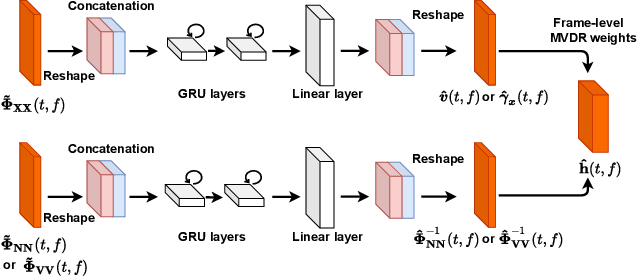
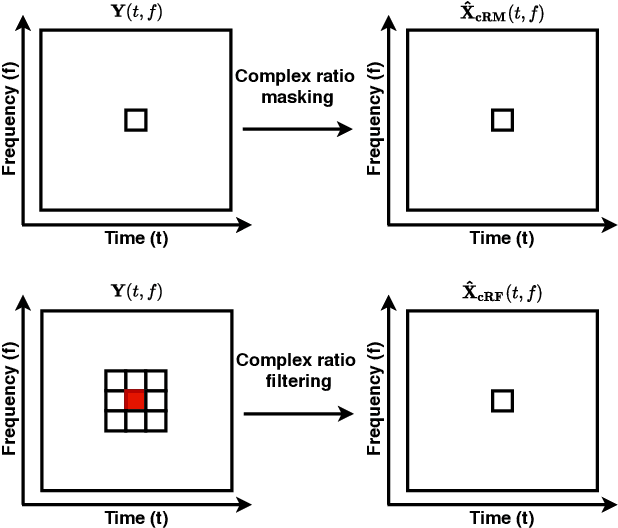
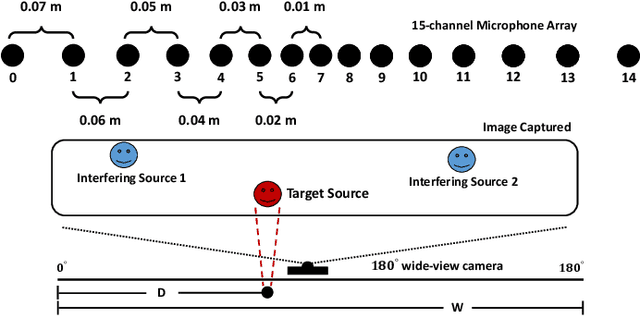
Abstract:Many purely neural network based speech separation approaches have been proposed that greatly improve objective assessment scores, but they often introduce nonlinear distortions that are harmful to automatic speech recognition (ASR). Minimum variance distortionless response (MVDR) filters strive to remove nonlinear distortions, however, these approaches either are not optimal for removing residual (linear) noise, or they are unstable when used jointly with neural networks. In this study, we propose a multi-channel multi-frame (MCMF) all deep learning (ADL)-MVDR approach for target speech separation, which extends our preliminary multi-channel ADL-MVDR approach. The MCMF ADL-MVDR handles different numbers of microphone channels in one framework, where it addresses linear and nonlinear distortions. Spatio-temporal cross correlations are also fully utilized in the proposed approach. The proposed system is evaluated using a Mandarin audio-visual corpora and is compared with several state-of-the-art approaches. Experimental results demonstrate the superiority of our proposed framework under different scenarios and across several objective evaluation metrics, including ASR performance.
 Add to Chrome
Add to Chrome Add to Firefox
Add to Firefox Add to Edge
Add to Edge